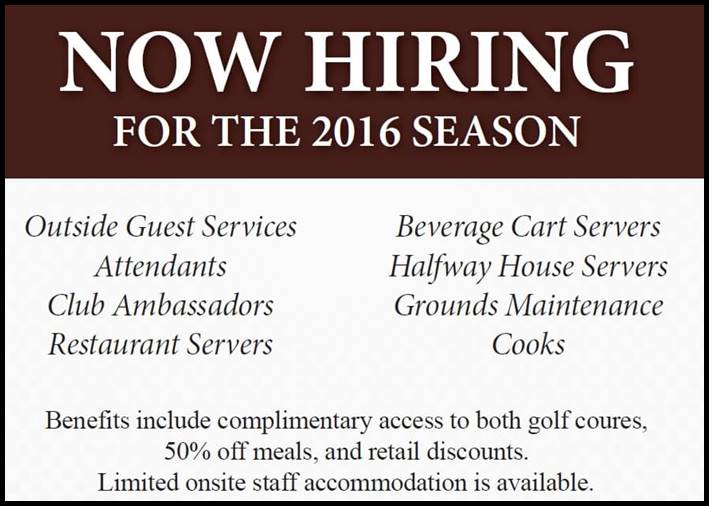
Navigating the staffing crisis is all about strategy, creativity, patience, and a bit of luck.
The current staffing issue we are facing is so frustrating. Where did all the staff go? Before the pandemic there were staffing shortages in varying degrees, but nothing like this. It has been suggested that they left the hospitality industry for greener pastures in another field, but when I look around it seems all industries are searching for staff.
Looking at the golf industry, it’s not just Food and Beverage that’s struggling to find staff, it’s all departments. So, what can we do? Do we just start hiring based on who shows up, check for a pulse, and offer them a job? This can be very tempting and I’m sure we have all done it in the past, as we allow emotions to lead the decision process rather than the brain.

When this is the process, it tends to create the revolving door syndrome that only causes large expenses for the club, frustration for the staff and confusion for the members. The candidate gets hired, you spend days training them only for them to leave a short time after and usually with little or no notice. It’s frustrating and it looks like next year will offer the same challenges, so let’s use what we learnt from this past season and put it into a strategy.
The first part of the strategy needs to include a marketing plan to help bring in as many applicants as possible. You always need to be collecting resumes. This allows you to be prepared in case someone gets up and leaves, or you decide to make a staffing change because someone is not working out.
This leads to the second part of the strategy: get rid of the bad or toxic employees. I think the fear of not being able to find a replacement can often mean we keep some poor employees around longer than we should, creating a poor work environment. No matter the job, no one wants to work for a company that has a poor work environment or culture. If you’re not sure about the work environment, do exit interviews. That way you can quickly learn a lot about the work environment.
Interviewing is the third part of the strategy and there are steps you can take to help reduce the amount of time you spend interviewing and help you hire a better “fit”. Interviewing is not an exact science, but there have been several HR professionals that have some recent data that suggest we need to make some changes to the usual interview questions and process.
The interview process should start with a pre-screening phone call that covers off the non-negotiable aspects of the job. This should include things like availability, time of shifts, lifting, being on your feet, use of technology etc. This is the first part of making sure you have a potentially good fit, and at the end of the pre-screen call leave them with a positive thought about the job and the company. This is to act as the draw or the insurance to make sure they show up for the live interview if they make it to that stage. This last step will hopefully eliminate “ghosting” or the act of them not showing up for the in-person interview.
For the actual interview, where possible, don’t interview them in your office. Take it to where they would be working if it’s an option. In the case of kitchen staff, it’s not practical to interview in the kitchen, but the dining room is still better than the office. Don’t ask the standard questions that they already have rehearsed answers for. Develop some questions that will identify if they are a fit for the team. A good fit is about more than just skill, it’s about attitude and personality. I find it helpful to have a few questions that start off with: “what if you were…” and “if you had to…”.
Finally, if you think they are a potential hire, take them on a tour. While doing the tour make sure you introduce them to other staff members by name and watch how they interact with each other. This has the same purpose as the last question in the pre-screening. It gets them excited and interested in the possibility of joining the team. Finding the right fit is not just about the skills and experience they bring to the table. In fact, that is probably only 20 per cent of the job. The rest is about personality and the ability to fit in with your team.
Finally, let’s not forget the reference check. Keep the questions to the things that are transferable and not job specific. Ask questions about punctuality; find out whether they were able to work alone or in a team, and did they get along with all the co-workers. As always, finish by asking if they would rehire them.
After they are hired and working, follow your employee engagement practices and coach them to be the best they can be.
No strategy is going to be perfect and weed out everyone that is not going to be a good fit. However, developing a written strategy that has specific and deliberate actions will give you the best chance and help develop a great work environment by reducing staff turnover.











